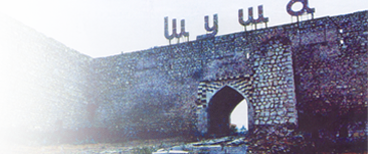 by the Public Association for “Protection of Rights of Migrants and Internally Displaced Persons in Azerbaijan” regarding 31st March, genocide day of Azerbaijanis
by the Public Association for “Protection of Rights of Migrants and Internally Displaced Persons in Azerbaijan” regarding 31st March, genocide day of Azerbaijanis
Armenians, moved from Iran and Turkey to Caucasus beginning from XIX century, achieved establishment of Armenian government in Azerbaijani lands and not satisfying with it, used every means for turning that state into “Great Armenia” at the cost of another state’s territory, and didn’t even avoid committing genocide against Azerbaijanis carrying out inhuman, vandalistic policy from time to time to achieve their goal.
Thousands of Azerbaijanis were slain in different parts of Azerbaijan; many settlements were destroyed during the 1905 Armenian-Moslem war waged as part of the same so-called Armenian program. Armenian genocide campaign against Azerbaijanis reached its culmination in 1918-1920. In the same years, a great number of Azerbaijani settlements were destroyed; local population mostly including women, children and old people was ruthlessly killed. Armenian savagery accompanied with massacre was more distinctly demonstrated in Baku, Shamaxi, Guba, Zangazur, Naxichevan and Karabakh. During the genocide campaign of March 1918 over 30 thousand people only in Baku and tens of thousands of Azerbaijanis in other regions became victims of Armenian savagery. Mass graveyard discovered in Guba last year proves it once again.
Armenians preconceived attitude towards Azerbaijanis was demonstrated even during the post-soviet period. After the Great Patriotic War, in 1948-1953, Azerbaijanis living in Western Azerbaijan named Armenia afterwards, were deported accompanied with horrible executions by Armenians.
Armenian’s passion for mastering others’ lands, as well as inexhaustible rancor and disgust against Moslems, especially against Azerbaijanis showed itself at the end of the XX century causing great tragedies. So-called Armenian “movement” claiming to annex inseparable part of Azerbaijan – Nagorno-Karabakh to Armenia turned into bloody war in the end. As a result, one fifth of Azerbaijani territories was occupied, about 900 settlements were destroyed, more than 20 thousand people were killed, over 1 million people became refugees and IDPs, and infrastructure in occupied regions was completely destroyed. Tragedies committed during war years in Xojaly, Meshali, Malibeyli, Gushchular, Agdaban, Karadagly, Karkicahan is an obvious example of Armenian genocide policy against Azerbaijanis. In spite of cease-fire regime, Azerbaijanis are still being killed along the frontline of troops.
Historical facts about Armenian genocide against Azerbaijanis were reflected in corresponding archive documents. Decree of the Azerbaijani president “About Azerbaijanis genocide” (March 26, 1998) giving juridical estimation to this historical reality announced officially March 31 as the Genocide Day of Azerbaijanis. To note regretfully, the majority of international organizations and world states haven’t taken any step to recognize Armenian genocide against Azerbaijanis based on historical proofs. Thought, so-called “Armenian genocide of 1915” not based on any facts and invented by Armenians was recognized by many states.
The Public Association for “Protection of Rights of Migrants and Internally Displaced Persons in Azerbaijan” appeal to the UNO, Supreme Court on Human Rights of the UNO, heads of the OSCE member-states, the European Council, the International and European Ombudsman Institution, the Asian Ombudsman Association, the International Peace Bureau and the Universal Peace Federation to fulfill practical work on recognizing Armenian genocide committed against Azerbaijanis last century.

